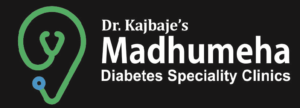Dietary Do’s and Don’ts for Managing Dyslipidemia
Introduction
Welcome to this comprehensive guide on dietary do’s and don’ts for managing dyslipidemia. If you have been diagnosed with dyslipidemia or are simply curious about this condition, you’re in the right place. In this article, we will cover everything you need to know about dyslipidemia and how you can make positive dietary changes to manage it effectively.
Understanding Dyslipidemia
Dyslipidemia is a medical term that refers to an abnormal amount of lipids or fats in the bloodstream. This includes high levels of cholesterol and triglycerides. These lipids are essential for our bodies, but when their levels are imbalanced, it can lead to serious health issues, such as cardiovascular disease, stroke, and heart attacks.
There are two main types of dyslipidemia: hyperlipidemia and hypoalphalipoproteinemia. Hyperlipidemia involves elevated levels of total cholesterol, low-density lipoprotein (LDL) cholesterol, or triglycerides. On the other hand, hypoalphalipoproteinemia is characterized by low levels of high-density lipoprotein (HDL) cholesterol.
The Role of Diet in Managing Dyslipidemia
When it comes to managing dyslipidemia, making dietary changes plays a vital role. By adopting a healthy eating pattern, you can lower your cholesterol levels, reduce inflammation, and improve your overall lipid profile. Here are some dietary do’s and don’ts to help you manage dyslipidemia effectively:
Do: Choose Heart-Healthy Fats
Not all fats are created equal. While saturated and trans fats can raise your cholesterol levels, mono- and polyunsaturated fats have the opposite effect. Instead of eliminating all fats from your diet, focus on incorporating heart-healthy fats that support your cardiovascular health. Good sources of unsaturated fats include:
- Avocados
- Nuts and seeds
- Olive oil
- Fatty fish like salmon and mackerel
Don’t: Consume Trans Fats
Trans fats are artificial fats that are commonly found in processed and fried foods. These fats not only raise LDL cholesterol but also lower HDL cholesterol. To manage dyslipidemia effectively, it’s essential to avoid or minimize your intake of foods that contain trans fats. Some common sources of trans fats include:
- Margarine
- Commercially baked goods like cookies and pastries
- Fast food items
- Fried foods
Do: Increase Fiber Intake
High-fiber foods are extremely beneficial for managing dyslipidemia. Soluble fiber, in particular, helps reduce LDL cholesterol levels by binding to it and carrying it out of the body. Incorporating more fiber-rich foods into your diet can help improve your lipid profile. Some excellent sources of dietary fiber include:
- Whole grains like oats and brown rice
- Legumes such as lentils and chickpeas
- Fruits and vegetables
- Nuts and seeds
Don’t: Overindulge in Processed Foods
Processed foods are notorious for being high in unhealthy fats, added sugars, and sodium. These factors can contribute to dyslipidemia and worsen your lipid profile. By limiting your intake of processed foods, you can significantly reduce your risk of developing cardiovascular issues. Instead, opt for whole, unprocessed foods as much as possible.
Do: Opt for Lean Proteins
Including lean proteins in your diet is an excellent way to manage dyslipidemia. Lean protein sources provide essential amino acids without the excess saturated fats or cholesterol found in fatty meats. Some examples of lean proteins include:
- Skinless chicken breast
- Turkey
- Fish and seafood
- Legumes and beans
- Low-fat dairy products
Don’t: Overconsume Red Meat and Full-Fat Dairy
While lean proteins are beneficial, it’s important to limit or avoid the consumption of red meat and full-fat dairy products. These foods are typically high in saturated fats and cholesterol, which can negatively impact your lipid profile. You can still enjoy these foods occasionally, but focus on moderation and balance.
Do: Emphasize Plant Sterols and Stanols
Plant sterols and stanols are naturally occurring substances found in certain fruits, vegetables, nuts, and grains. These compounds have been shown to lower LDL cholesterol levels by reducing its absorption in the intestines. Adding foods fortified with plant sterols and stanols to your diet can be an effective way to manage dyslipidemia. Some examples include:
- Fortified margarine
- Yogurt drinks
- Bread and cereal bars
Don’t: Neglect Physical Activity
While this article primarily focuses on dietary do’s and don’ts, it’s essential to highlight the importance of physical activity in managing dyslipidemia. Regular exercise can help raise HDL cholesterol levels, reduce triglycerides, and improve overall cardiovascular health. Aim for at least 150 minutes of moderate-intensity aerobic activity per week, along with strength-training exercises.
Conclusion
Managing dyslipidemia is achievable by incorporating the right dietary changes into your lifestyle. By following the do’s and don’ts discussed in this article, you can take control of your lipid profile and reduce your risk of cardiovascular diseases. Remember to choose heart-healthy fats, increase your fiber intake, opt for lean proteins, and emphasize plant sterols and stanols. Combined with regular physical activity, these lifestyle modifications can have a positive impact on your overall health and well-being.
Take charge of your health today, and start making conscious choices that support your cardiovascular health and manage dyslipidemia effectively. Your heart will thank you!
